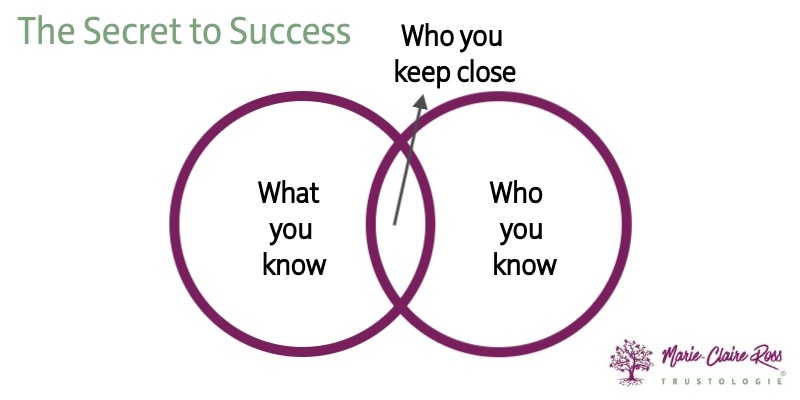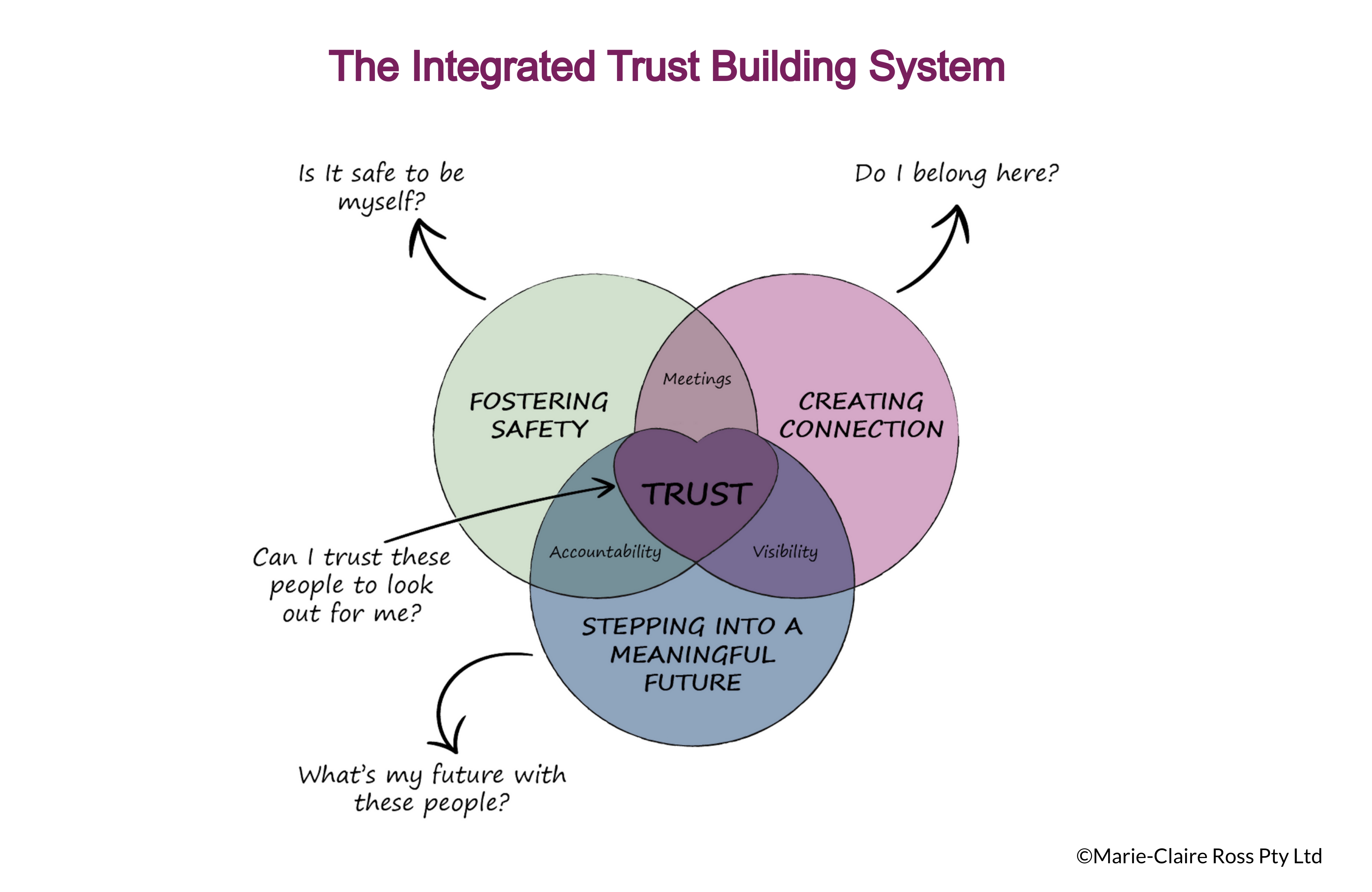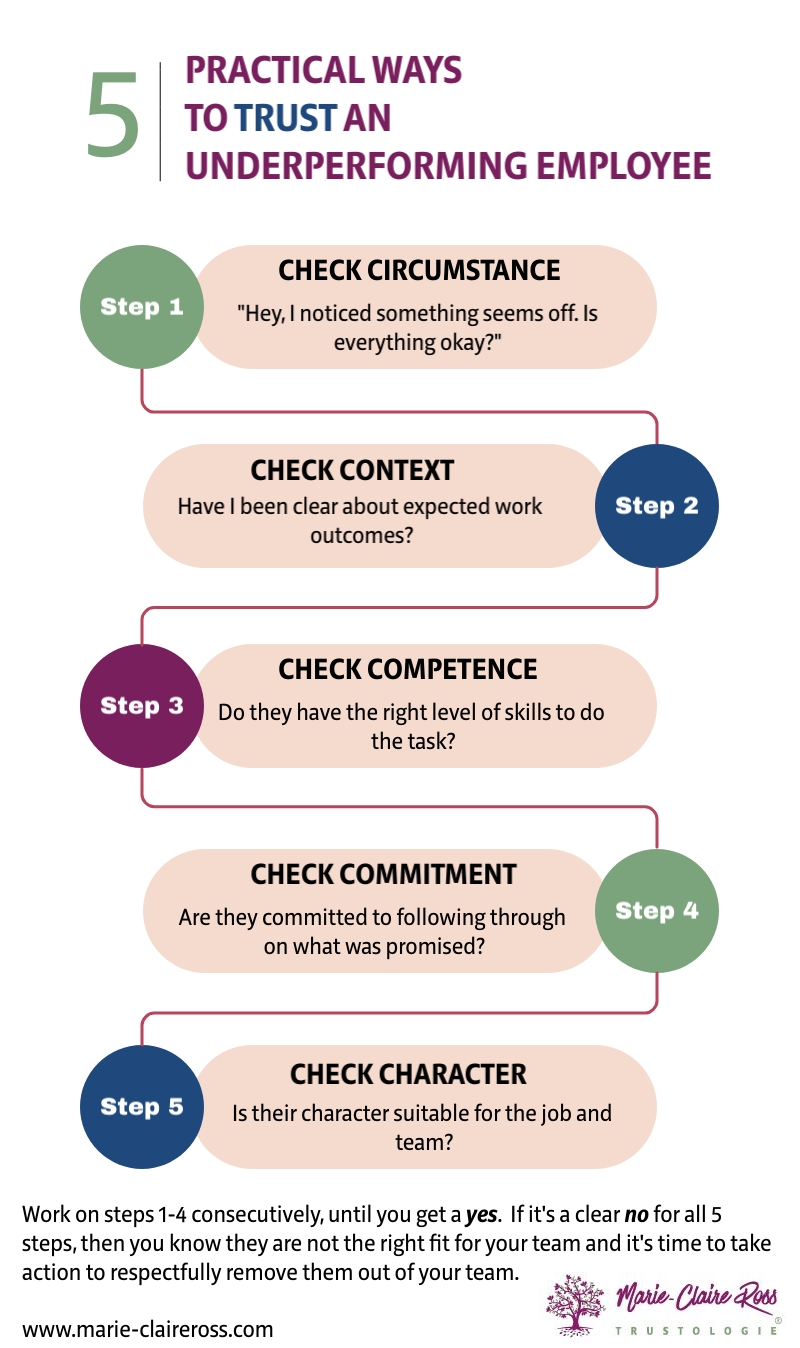
A few years ago, I was sitting in a large auditorium listening to the wonderful, Jim Collins, who studied what makes great companies tick for twenty-five years.
Trust might be a small word, but it is a big, complicated topic.
We process whether we can trust someone through our emotions. We don’t trust others by what they say, it’s how they make us feel. It’s their consistent actions that show they care about our wellbeing that determine whether we feel we can or cannot trust them.
"You can’t talk your way into trust;
you have to behave your way into it."
Marie-Claire Ross, Trusted to Thrive
When it comes to improving trust, it is really important to understand in concrete terms what it means first. Having clear language around trust gets everyone on the same page. A definition that I use for workplace trust is from the book Trusted to Thrive (get a free chapter here) is:
The ability for everyone in an organisation to confidently rely on (and predict) that others will do the right thing and make good on their promises.
Neuroscience research confirms that there are certain factors that the brain requires to trust a situation. We judge whether we trust people based on how connected we are, whether we have a future together and how safe we feel.
You emotionally signal to your people that ‘we’re all in this together’ through asking questions each week, in meetings and one-on-ones, and through improving visibility of work, being approachable and demanding reciprocal accountability.
In my work and research with clients, I have developed the Integrated Trust Building System. It lays out the steps and strategies to help leaders more easily create a thriving team environment for a range of different individuals.

But telling people that they are valued, safe and connected is not enough. It has to be backed up with consistent action. Otherwise, people will distrust you and disengage.
So let's take a look at six important actions managers can use to build trust in the workplace.
It's not enough to believe that you can help build a sense of connection with team members through collaboration and regular meetings.
Leaders need to be intentional about encouraging team members to trust one another.
We talk a lot about bosses not trusting employees when they can’t see them working. But colleagues can also struggle to trust their team mates who aren't visible or not accountable to high standards.
In weekly team meetings, encourage each team member to talk about their progress to help everyone understand their contribution to the team. Make each individual responsible for gathering this information and presenting it. This is important because we only trust colleagues who are competent at their job. Encouraging each member to prove their competency will help others trust them.
Research reveals that trust emerges as a result of everyday healthy peer-to-peer interactions. Encourage team members to build trust among themselves through championing regular communication, respectful dialogue and meeting standards with team members to facilitate stronger teamwork.
3. DELIVER RESULTSIn a workplace, employees need confirmation that they are safe from harm and that their fellow workers are looking out for them. They need to feel connected and valued for their contribution.
At the same time, employees need to believe the work they do matters, that they are making an impact and there is a clear future for them within the organisation.
Workplaces require leaders who reassure people that their emotional needs are being met through both verbal and nonverbal communication. Non-verbal communication includes using body language, eye contact, facial expressions and gestures, signals that help us interpret the real meaning and intent behind what someone is saying.
It is vital that leaders know how to communicate both verbally and non-verbally to the part of the brain that manages trust – the limbic brain. The part of the brain that doesn’t understand language, but feelings.
This is critical to engage people emotionally and pull them into the Achievement Zone.
High-trust leaders customise corporate communication to make it meaningful for their team. They use stories and contrast to help people feel the exciting future ahead. And they ensure that they honestly communicate the way forward, rather than sugar-coating reality.
Trusting yourself and your ability to lead a team successfully is no easy task. It requires leading with compassion, believing in people and trusting that everything will be okay. And when you truly embody these behaviours, you will know.
Because when you step back and observe your team you will see the magic unfold. People will be working harmoniously together, energised by the need to solve problems to their highest abilities and serve the client at the highest level. You will have a team that feels trusted to thrive. Lead by you: a trusted and connected leader.
If that feels like the type of leader you want to be, come and join the Tribe of Trusted Leaders Community for a free 30-day trial.

A few years ago, I was sitting in a large auditorium listening to the wonderful, Jim Collins, who studied what makes great companies tick for twenty-five years.
